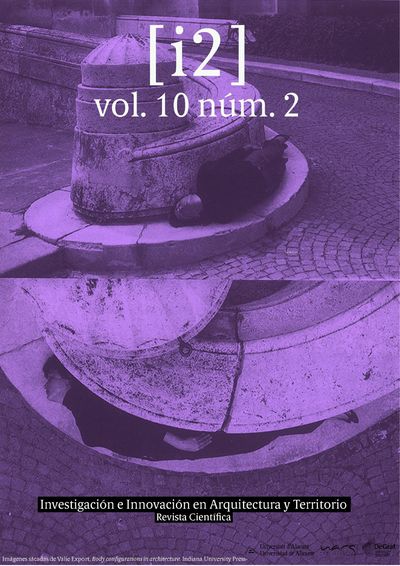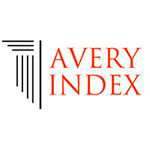Afectos en la ciudad mediada por la tecnología. El papel de los juegos de realidad aumentada en la infancia y el sentido de apego al lugar
DOI:
https://doi.org/10.14198/I2.22121Paraules clau:
Realidad Aumentada, Interacción urbana de los niños, Mundo digital, Espacio urbano mediado, Apego al lugarResum
Hoy en día la tecnología se ha convertido en una componente esencial de nuestros entornos urbanos. La ciudad mediada es una realidad que aprovecha diversos tipos de tecnologías para mejorar la eficacia de la vida urbana cotidiana y revelar otros modos de vida posibles. Los espacios aumentados emergen como elementos vertebradores de estas ciudades, utilizando la realidad aumentada (RA) para facilitar la comunicación y la interacción entre lugares digitales y físicos. La ciudad puede volver a ser aquel lugar donde niños y niñas juegan y desarrollan sus habilidades físicas y sociales. Frente a las tendencias de ocio infantil que fomentan el sedentarismo y otros hábitos poco saludables, las nuevas tecnologías constituyen una oportunidad para que los menores recuperen la experiencia urbana del juego. Además, la interacción de los menores con su entorno urbano propicia el desarrollo de apego al lugar, un vínculo emocional y afectivo que define la relación existente entre los sujetos y el lugar que habitan. Para el desarrollo de esta tesis resulta central incorporar al diseño de la ciudad las condiciones inducidas desde la ciudad mediada. Este artículo explora la tecnología de la realidad aumentada como estrategia de reactivación del espacio público para los menores, proporcionándoles una forma nueva de interactuar con su ciudad y, en consecuencia, de fomentar el sentimiento de apego al lugar. Junto al planteamiento teórico, se exponen tres casos de estudio que muestran cómo los menores juegan con aplicaciones de realidad aumentada y cómo esta tecnología es susceptible de propiciar el desarrollo de habilidades afectivas relacionadas con la percepción infantil del espacio urbano.Referències
AGAEL, F., ÖZER, Ö. (2017) Human perception in the libyan built environment: Al- Khums and Bani Walid cities as case studies. Archnet-IJAR: International Journal of Architectural Research, vol. 11, no. 2, pp. 157-174. https://doi.org/10.26687/archnet-ijar.v11i2.1242
ALBINO, V., BERARDI, U., DANGELICO, R.M. (2015) Smart Cities: Definitions, dimensions, performance, and initiatives. Journal of Urban Technology, vol. 22, no. 1, pp. 3-21. ISSN 1063-0732. https://doi.org/10.1080/10630732.2014.942092
ALTMAN I., SETHA, M.L. (eds.), Place Attachment. New York: Springer. ISBN 9781468487558 https://doi.org/10.1007/978-1-4684-8753-4
AMINE, M. (2018) Place attachment process and its influence on neighborhood park utilization in putrajaya, malaysia. Universiti Putra Malaysia. http://psasir.upm.edu.my/id/eprint/68628/1/FRSB 2018 3 IR.pdf
ARISO, J.M. (2017) Is Critical Thinking Particularly Necessary when Using Augmented Reality in KnowledgeSociety? An Introductory Paradox. En: J.M.
ARISO (ed.), Augmented Reality. Berlin: Walter de Gruyter GmbH, pp. 3-21. ISBN 9783110497007. https://doi.org/10.1515/9783110497656-001
AZIZ, N.F. y SAID, I. (2016) Outdoor environments as children's play spaces: playground affordances. En: B. EVANS, J. HORTON y T. SKELTON (eds.), Play and Recreation, Health and Wellbeing. Singapore: Springer, pp. 87-108. ISBN 9789814585514. https://doi.org/10.1007/978-981-4585-51-4_7
AUSTRALASIAN LEISURE MANAGEMENT (2017) Magical Park technology creates digital fantasy playgrounds [Consulta: 2 noviembre 2020]. https://www.ausleisure.com.au/news/magical-park-technology-creates-digital-fantasy-playgrounds/
BAMESBERGER, C. (2020) Engaging reality: Examining how mixed reality mobile apps and games facilitate sense of place development for a more engaged citizenry. Colorado State University.
BASSIOUNI, D.H. y HACKLEY, C. (2016) Young consumers Video games and young children's evolving sense of identity: a qualitative study. Young Consumers, vol. 17, no. 2, pp. 127-142. https://doi.org/10.1108/YC-08-2015-00551
BIDERMANN, A., CALABRESE, F., GIRARDIN, F., KLOECKL, K., RATTI, C. y RESCH, B. (2007) Wikicity Rome [Consulta: 19 julio 2022] https://senseable.mit.edu/wikicity/rome/
BOURKE, J. (2012) Standing in the footprints of the contemporary urban child: Constructing a sense of place along the everyday urban routes children walk through public space. Technological University Dublin. http://arrow.dit.ie/appadoc.
BRĖDIKYTĖ, M. (2011) The zones of proximal development in children's play. Finland: University Of Oulu.
CHAWLA, L. (1992) Childhood Place Attachments. En: I. ALTMAN y M.L. SETHA (eds.), Place Attachment. New York: Springer, pp. 63-86. ISBN 9781468487558 https://doi.org/10.1007/978-1-4684-8753-4_4
CHEN, Y., ZHOU, D., WANG, Y. y YU, J. (2017). Application of Augmented Reality for early childhood english teaching. International Symposium on Educational Technology. Hong Kong: IEEE, pp. 111-115. ISBN 9781509030316. https://doi.org/10.1109/ISET.2017.34
COMMON SENSE MEDIA (2019). Kid reviews for Minecraft Earth. [Consulta: 12 diciembre 2021]. https://www.commonsensemedia.org/app-reviews/minecraft-earth/user-reviews/child
DUZENLI, T., ALPAK, E.M. y YILMAZ, S. (2019). Children's imaginations about environment and their perceptions on environmental problems. Fresenius Environmental Bulletin, vol. 28, no. 12, pp. 9798-9808.
EPIC GAMES (2017) Fortnite. Epic Games. https://www.epicgames.com/fortnite
GEO AR GAMES (2017). MAGICAL PARK 2 PROMO 2017 [Video]. YouTube [Consulta: 12 diciembre 2021]. https://www.youtube.com/watch?v=4-ISZ1g9GvU
GEO AR GAMES (2018). Magical Park at the school [Video]. YouTube [Consulta: 12 diciembre 2021]. https://www.youtube.com/watch?v=dQNIlmkh9VU&t=10s
GEO AR GAMES LTD (2015). Magical Park Geo AR Games Ltd. [Consulta: 21 julio 2022]. https://www.geoargames.com/updates-magical-park
GEOCACHING (2016). Kids Explain Geocaching [Video] 27 junio 2016. [Consulta: 12 diciembre 2021]. https://www.youtube.com/watch?v=CwjlnXj8R-0
GOSPODINI, A., GALANI, V. (2006) Street space as playground: Investigating children's choices. International Journal of Sustainable Development and Planning, vol. 1, no. 3, pp. 353-362. ISSN 17437601. https://doi.org/10.2495/SDP-V1-N3-353-362
GREEN, N. y TURNER, M. (2017) Creating Children's Spaces, Children Co-Creating Place. Journal of Childhood Studies, vol. 42, no. 3, pp. 27-39. ISSN 2371-4107. https://doi.org/10.18357/jcs.v42i3.17892
GROUNDSPEAK, I. (2000) Geocaching. Groundspeak, Inc. [Consulta: 21 julio 2022]. https://www.geocaching.com
HAMMAD, A., SRIVASTAVA, G. (2017). Augmented Reality: A review. International Journal of Technical Research and Applications, 42, pp. 7-11. e-ISSN: 2320-8163. https://www.ijtra.com/special-issue-view.php?paper=augmented-reality-a-review.pdf
HANDLYKKEN, A.K. (2012) Digital Cities in the making: exploring perceptions of space, agency of actors and heterotopia. CIBERLEGENDA, vol. 25, pp. 22-37. https://doi.org/10.22409/c-legenda.v0i25.26229
SHELTON, B.E., HEDLEY, N.R. (2004) Exploring a cognitive basis for learning spatial relationships with Augmented Reality. Technology, Instruction, Cognition and Learning, vol. 1, no. 4, pp. 323-357. https://digitalcommons.usu.edu/itls_facpub/92/
IHAMAKI, P. (2015) User experience of Geocaching and its application to tourism and education. University of Turku.
IRVING, M. (2019) Minecraft Earth builds on the real world with augmented reality. [Consulta: 2 noviembre 2020]. https://newatlas.com/minecraft-earth-
augmented-reality-mobile-game/59750/
ISHIDA, T. (2000) Understanding Digital Cities. En: G. GOOS, J. HARTMANIS y J. van LEEUWEN (eds.), Digital Cities Technologies, Experiences, and Future perspectives. Berlin: Springer, pp. 7-17. ISBN 3540672656. https://doi.org/10.1007/3-540-46422-0
JACOBS, J. (1961) The death and life of great American Cities. New York: Random House. ISBN 0394421590
KELLERT, S.R. (2002) Experiencing Nature: Affective, Cognitive, and Evaluative Development in Children. En: P.H. KAHN y S.R. KELLERT (eds.), Children and Nature: Psychological, Sociocultural, and Evolutionary investigations. Cambridge, Massachusetts: s.n., pp. 117-151. https://doi.org/10.7551/mitpress/1807.003.0006
KIM, H.J., OH, S., PARK, S., BAEK, M.C. y KIM, K. (2017). Children ' s play in urban interstitial spaces: Cities shared via playgrounds. UIA 2017 Seoul World Architects Congress. SEOUL: UIA 2017 SEOUL, pp. P-0767. http://www.uia2017seoul.org/P/papers/Abstract/Design_Works/Poster/P-0767.pdf
KONCA, A.S. (2021) Digital technology usage of young children: Screen time and families. Early Childhood Education Journal. ISSN 1573-1707. https://doi.org/10.1007/s10643-021-01245-7
KROSSBAKKEN, E., TORSHEIM, T., MENTZONI, R.A., KING, D.L., BJORVATN, B., LORVIK, I.M. y PALLESEN, S. (2018) The effectiveness of a parental guide for prevention of problematic video gaming in children: A public health randomized controlled intervention study. Journal of Behavioral Addictions, vol. 7, no. 1, pp. 1-10. ISSN 20635303. https://doi.org/10.1556/2006.6.2017.087
KUDRIAVTSEV, V.T.1(1997) Smysl chelovecheskogo detstva i psihicheskoe razvitie rebionka [The sense of human childhood and mental development of children]. Moscow: house URAO.
LI YING, J., VANHAVERBEKE, W. y SCHOENMAKERS, W. (2008) Exploration and exploitation in innovation: reframing interpretation. Creativity and Innovation Management, vol. 17, no. 2, pp. 107-126. https://doi.org/10.1111/j.1467-8691.2008.00477.x
LIDÓN DE MIGUEL, M. (2015) Aldo van Eyck y el concepto In-between: aplicación en el Orfanato de Amsterdam. Universitat Politecnica De Valencia. https://m.riunet.upv.es/handle/10251/55348
LUUSUA, A. (2016) Experiencing and evaluating digital augmentation of public urban spaces. University of Oulu.
LYNCH, K. (1977) Growing up in cities: Studies of the spatial environment of adolescence in Cracow, Melbourne, Mexico City, Salta, Toluca, and Warszawa. Paris: UNESCO. ISBN 92-3-101443-9.
MANOVICH, L. (2006) The poetics of augmented space. Visual communication, vol. 5, no. 2, pp. 219-240. https://doi.org/10.1177/1470357206065527
MASHRAH, H.T. (2017) The impact of adopting and using technology by children. Journal of Education and Learning, vol. 11, no. 1, pp. 35-40. https://doi.org/10.11591/edulearn.v11i1.5588
MCNAMARA, J. (2004) Geocaching for Dummies. Indianapolis, Indiana: Wiley Publishing. ISBN 3175723993.
METIN, P. (2003) The effects of traditional playground equipment design in children's developmental needs. The Middle East technical university. https://etd.lib.metu.edu.tr/upload/1213727/index.pdf
MOHAMMAD HOSEINI, P., HASHEMNEZHAD, H. y HEIDARI, A.A. (2013) Sense of place and place attachment. International Journal of Architecture and Urban Development, vol. 3, no. 1, pp. 5-12. https://ijaud.srbiau.ac.ir/article_581_a90b5ac919ddc57e6743d8ce32d19741.pdf
MOJANG STUDIOS (2020). Minecraft Earth FAQs - Home. [Consulta: 5 noviembre 2020]. https://help.minecraft.net/hc/en-us/articles/360033744412-Minecraft-Earth-FAQs
MOJANG STUDIOS (2019). Minecraft Earth llega a su fin. 17 octubre 2019. Xbox Game Studios. [Consulta: 20 julio 2022]. https://www.minecraft.net/es-es/article/minecraft-earth-coming-end
MONCADA JIMÉNEZ, J. ARAYA CHACÓN, Y. (2012) Vista de El efecto de los videojuegos en variables sociales, psicológicas y fisiológicas en niños y adolescentes. Retos. vol. 21, pp. 43-49. https://doi.org/10.47197/retos.v0i21.34603
NAJAFI, M. y BIN MOHD SHARIFF, M. (2011) The concept of place and sense of place in architectural studies. World Academy of Science, Engineering and Technology, vol. 56, pp. 1100-1106. http://dx.doi.org/10.5281/zenodo.1082223
NIANTIC, I. (2016) PokemonGo. Niantic. [Consulta: 20 julio 2022]. https://www.pokemon.com/es/
NIJHOLT, A. (2017) Towards Playful and Playable Cities. En: A. NIJHOLT (ed.), Playable cities. The city as a digital playground. Singapore: Springer Nature, pp. 1-20. ISBN 9789811019616. https://doi.org/10.1007/978-981-10-1962-3_1
NOORADDIN, H. (2020) Children city architecture. Advances in social sciences research, vol. 7, no. 7, pp. 768-796. https://doi.org/10.14738/assrj.77.8722
NORBERG SCHULZ, C. (1966) Intentions in Architecture. Oslo, Norway: MIT Press. ISBN 9780262140041
NOVITA, D. y SURYANI, E. (2019) Smart city on public perception. IOP Conference Series: Earth and Environmental Science, vol. 248, no. 1. ISSN 17551315. https://doi.org/10.1088/1755-1315/248/1/012081
O'HARA, K. (2008) Understanding geocaching practices and motivations. Conference on Human Factors in Computing Systems. Florence Italy: Association for Computing Machinery, pp. 1177-1186. ISBN 9781605580111. https://doi.org/10.1145/1357054.1357239
OLEKSY, T. y WNUK, A. (2017) Catch them all and increase your place attachment! The role of location-based augmented reality games in changing people - place relations. Computers in Human Behavior, vol. 76, pp. 3-8. ISSN 0747-5632. https://doi.org/10.1016/j.chb.2017.06.008
PARMAKSIZ, Z.G. (2017) Augmented Reality activities for children: A comparative analysis on understanding geometric shapes and improving spatial skills. Middle East Technical University.
QABSHOQA, M. (2018) Virtual place-making - The re-discovery of architectural places through augmented play A playful emergence between the real and unreal. En: A. KĘPCZYŃSKA-WALCZAK y S. BIAŁKOWSK (eds.), eCAADe 2018 Computing for a better tomorrow. Łódź, Poland: eCAADe, pp. 451-458. https://doi.org/10.52842/conf.ecaade.2018.1.451
ROCHE, S., NABIAN, N., KLOECKL, K. y RATTI, C. (2012). Are 'Smart Cities' Smart Enough? En: A. RAJABIFARD y D. COLEMAN (eds.), Spatially Enabling Government, Industry and Citizens: Research Development and Perspectives. Needham, MA, USA: GSDI Association Press, pp. 215-236. ISBN 978-0-9852444-0-8. https://rest.neptune-prod.its.unimelb.edu.au/server/api/core/bitstreams/00f9d44f-50f8-5344-9934-d366791dc8f0/content
ROIG SEGOVIA, E. (2014) Heightened environment imperative for informational digital ecology of the architectural. Madrid: Universidad Politécnica de Madrid.
SANCAR, F.H. y SEVERCAN, Y.C. (2010) Children's places: Rural-urban comparisons using participatory photography in the Bodrum peninsula, Turkey. Journal of Urban Design, vol. 15, no. 3, pp. 293-324. ISSN 13574809. https://doi.org/10.1080/13574809.2010.487808
SCHWARTZ, R. y HALEGOUA, G.R. (2015) The spatial self: Location-based identity performance on social media. New media & society, vol. 17, no. 10, pp. 1643-1660. https://doi.org/10.1177/1461444814531364
SOBEL, D. (2002) Children’s special places: Exploring the roles of forts, dens, and bush houses in middle childhood. Detroit: Wayne State University Press. ISBN 0814330266
SULAIMAN, N. y IBRAHIM, F.I. (2019) Children in Urban Space: An Overview. 9th Asia Pacific International Conference on Environment-Behaviour Studies. Lisbon: e-IPH Ltd., pp. 9-13. https://doi.org/10.21834/e-bpj.v4i11.1734
UJANG, N. y ZAKARIYA, K. (2018) Place attachment as indicator for place significance and value. Asian Journal of Behavioural Studies, vol. 3, no. 10, pp. 95-103. ISSN 2398-4295. https://doi.org/10.21834/ajbes.v3i10.84
UMOJA WA MATAIFA (2022). 68% of the world population projected to live in urban areas by 2050, says UN | Umoja wa Mataifa. [Consulta: 17 julio 2022]. https://www.un.org/sw/desa/68-world-population-projected-live-urban-areas-2050-says-un
VATERLAUS, J. (2012) Late adolescents' perceptions of a digital generation gap and perceived parent-child relations. Utah State University. https://digitalcommons.usu.edu/etd
WHEATLEY, K. (2014) Visual regimes & Virtual becomings: The production of (Augmented) space in the 'New Berlin'. Victoria University of Wellington.
Descàrregues
Estadístiques
Publicades
Com citar
Número
Secció
Llicència
Drets d'autor (c) 2022 Yasaman Nekoui, Eduardo Roig

Aquesta obra està sota una llicència internacional Creative Commons Reconeixement 4.0.







